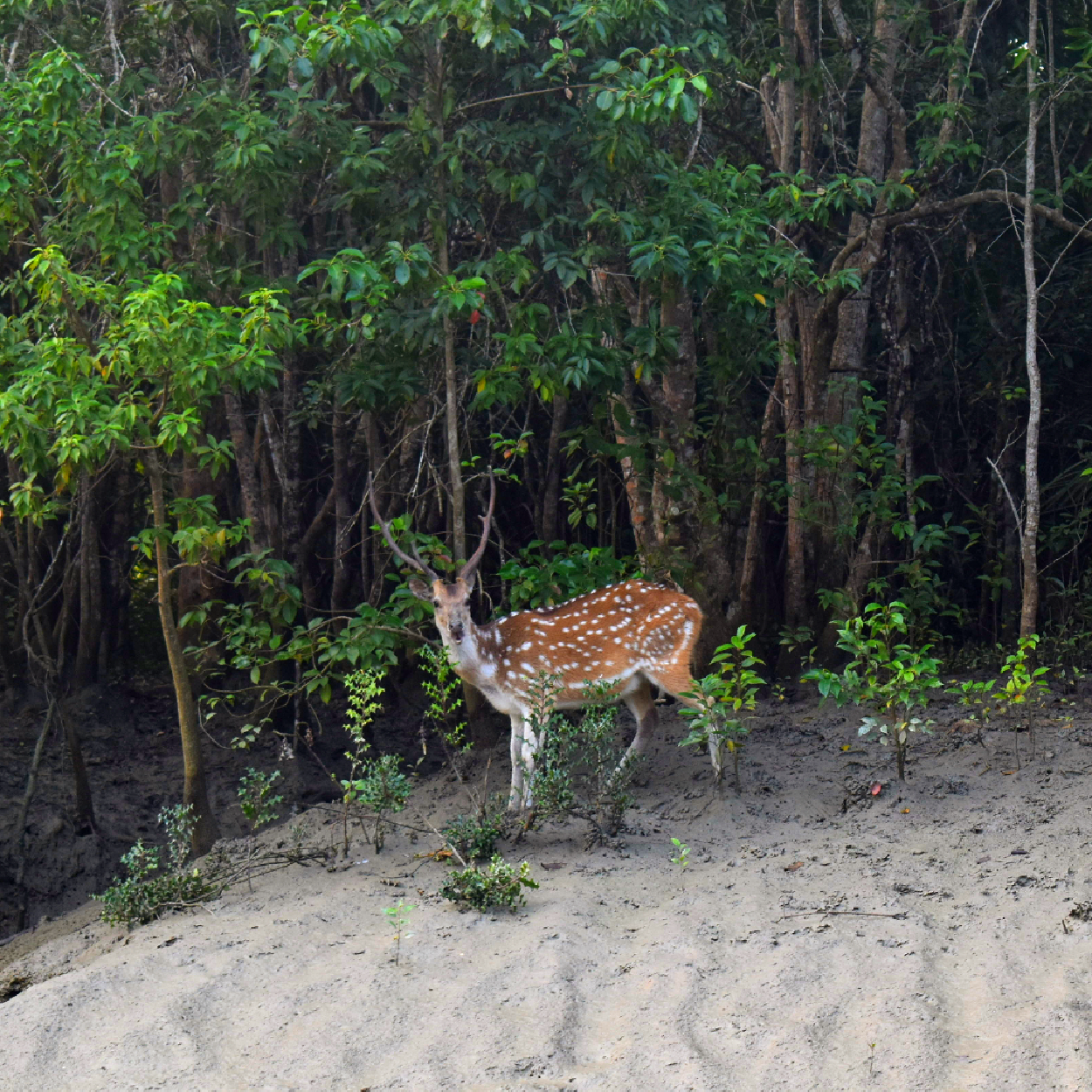The Spotted Deer, locally known as chitra or chital (Axis axis), grace the Sundarbans with their elegant, reddish-brown coats adorned by white spots and distinctive three-pronged antlers on males. Standing around 70–95 cm at the shoulder and weighing up to 85 kg, these deer are medium-sized yet striking, their dark dorsal stripe and white underparts adding to their beauty
![]()
These deer are primarily herbivores, foraging on mangrove grasses, tender leaves, fruits, and buds. They particularly favor leaves and fruit from keora and other local trees, often browsing on raised hind legs to reach higher foliage
Their widespread feeding behavior plays a vital ecological role, helping to maintain a balanced vegetation cover by preventing overgrowth and promoting biodiversity.
In the Sundarbans, spotted deer are not only prey for the iconic Bengal tiger—they constitute nearly 79 percent of its diet—but also serve as natural gardeners, shaping the understory and contributing to forest health Census data shows their population has grown from roughly 80,000 in the 1980s to over 140,000 in recent years, a testament to conservation efforts.
One of the most fascinating aspects of these deer is their symbiotic relationship with rhesus macaque monkeys. The monkeys dislodge fruits and leaves high up in the trees, which the deer then enjoy, and in return, deer are alert to predators, often responding to the monkeys’ alarm calls—creating a mutual early-warning system against threats like tigers Observers in other parts of the subcontinent have even reported langurs and deer literally foraging side by side in perfect harmony, with deer feeding off what monkeys drop ![]()
Despite their increased numbers and ecological importance, spotted deer still face challenges. Poaching, driven by demand for venison and hides, remains a serious threat—especially during winter when hunting activity spikes. Enforcement efforts continue, but conservationists emphasize that protecting prey species is just as vital as safeguarding predators for the Sundarbans ecosystem to thrive.
The Spotted Deer are more than just wildlife; they are vital threads weaving together the tapestry of Sundarbans life: nurturing forests, supporting tigers, harmonizing with primates, and enchanting every visitor who glimpses their graceful presence in the mangrove glow.
